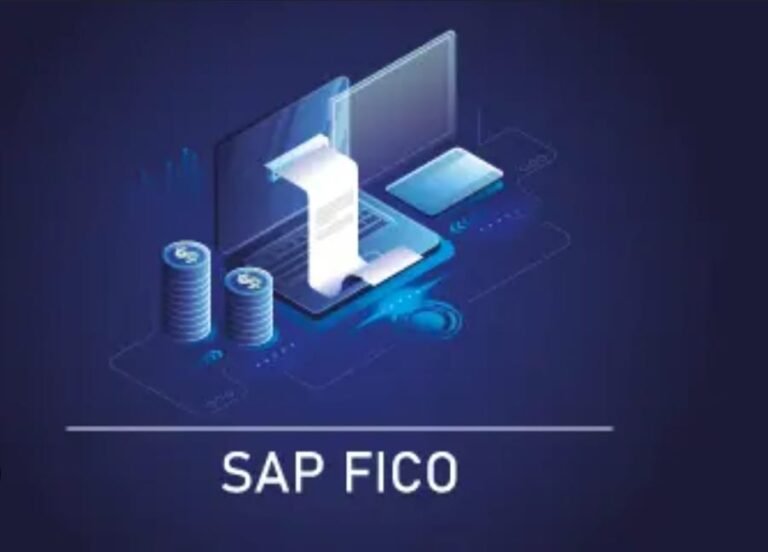SAP FICO | Cost Center and Profit Center Accounting |

Cost Center Accounting (CCA) and Profit Center Accounting (PCA) are crucial components of SAP FICO that help organizations track and allocate costs and revenues. However, these processes can present various challenges when posting transactions, handling allocations, or reconciling data. In this blog, we’ll explore common Cost Center and Profit Center Accounting issues in a question-and-answer format, along with solutions to help streamline operations.
1. Why is my cost center not receiving allocations correctly from internal orders or overhead cost orders?
The cost center might not receive allocations due to incorrect settlement rules, missing allocation cycles, or misconfigured internal order settings.
Solution:
- Review Allocation Cycles: In T-code KSU1, check if allocation cycles for cost center allocation have been defined properly. Ensure that the sender and receiver cost centers are correctly assigned in the allocation cycle.
- Check Settlement Rules: Verify that the internal order (T-code: KO02) or overhead cost order has the correct settlement rules defined. The settlement profile should point to the appropriate cost center.
- Run Allocation Process: Use T-code KSV5 to execute the allocation run. Review any errors or warnings in the logs and ensure that the correct fiscal period is selected for the allocation process.
2. Why is my profit center not receiving correct postings during journal entries?
Profit centers may not receive the expected postings if they are not assigned properly during the document posting or if automatic derivation is not set up.
Solution:
- Check Profit Center Assignment: Ensure that the profit center is correctly assigned to the cost center, internal order, or WBS element in the master data. Use T-code KS03 (Display Cost Center) to verify the assigned profit center.
- Activate Profit Center Derivation: In T-code KEPC, verify the derivation rules to ensure the system automatically assigns the correct profit center during journal entry postings. Check that all necessary criteria such as company code and account assignment are properly set.
- Review Document Splitting: If using New GL with document splitting, ensure that document splitting is correctly configured (T-code SPRO > Financial Accounting > General Ledger Accounting > Document Splitting). This will ensure that profit centers are correctly derived for each line item.
3. Why am I facing issues when posting between different cost centers and profit centers?
Posting errors often occur when transferring costs or revenues between cost centers and profit centers due to missing account assignments or incorrect validation settings.
Solution:
- Cross-Company Code Posting Configuration: If posting between different company codes, ensure that cross-company code clearing accounts are set up in T-code OBYA. This will allow costs to be transferred between profit centers belonging to different company codes.
- Use Correct Transaction Codes: For cost center postings, use KB11N (Post Cross-Company Code Costs). For profit center transfers, use 9KE0 (Transfer Posting for Profit Centers).
- Update Validation and Substitution Rules: Check the validation and substitution rules in T-code GGB0 (Validation) and GGB1 (Substitution) to ensure that postings between cost centers and profit centers are validated according to company policies.
4. Why is my cost center hierarchy not reflected correctly in reports?
Cost center hierarchy issues arise when cost centers are incorrectly assigned or when the hierarchy is not properly maintained, leading to reporting errors.
Solution:
- Check Cost Center Hierarchy: Use T-code KS13 to view the current cost center hierarchy and ensure that all cost centers are correctly assigned to the appropriate node. Misassignment can cause incorrect reporting in cost center reports.
- Review Validity Periods: Ensure that the validity periods of the cost centers match the reporting period. Use KS02 to modify the validity period of cost centers that may not have been correctly set.
- Update Standard Hierarchy: If new cost centers have been created, ensure they are included in the standard cost center hierarchy. In T-code OKEON, you can verify and update the standard hierarchy.
5. Why are planned values not appearing correctly in Cost Center Planning reports?
Incorrect planning values in cost center reports can arise from errors in the planning process, such as missing planning versions or incorrect planning layouts.
Solution:
- Verify Planning Version: Ensure that the correct planning version is selected in T-code KP06 (Cost Center Planning). Planned data may not appear if the wrong version is selected.
- Check Planning Layout: Ensure that the planning layout is properly defined and assigned to the cost center group in T-code KP34. Incorrect layouts can cause planned values to be misreported or not shown at all.
- Run Plan Assessment or Distribution: After planning, run plan assessments or distributions using T-code KSU5 (Plan Distribution) to allocate planned costs correctly across cost centers. This ensures that planned costs flow through the correct cost centers.
6. Why is there a discrepancy between my profit center and cost center reports?
Discrepancies between profit center and cost center reports often occur due to incorrect allocation of costs or revenue or missing reconciliation between the two.
Solution:
- Reconcile Cost Centers and Profit Centers: Use T-code KE5Z to reconcile profit center accounting with cost centers. This helps ensure that all postings have been correctly assigned to both cost centers and profit centers.
- Review Transfer Pricing: If your organization uses internal transfer pricing, check the configuration for cost transfers between profit centers. Use T-code 8KEK to set up and review transfer pricing rules.
- Check Document Splitting: If using New GL, ensure document splitting is properly set up for both cost centers and profit centers to avoid inconsistencies in reports.
7. Why are cost center assessments not distributing costs evenly?
Uneven cost distribution during assessments can result from incorrect assessment rules, invalid sender/receiver relationships, or misconfigured distribution keys.
Solution:
- Review Assessment Cycle: In T-code KSU1, verify the assessment cycle configuration. Ensure that all sender and receiver cost centers are properly assigned and that the correct allocation base is used.
- Check Distribution Keys: Review the distribution keys assigned to the cost centers in T-code KS02. Ensure that the distribution key reflects the correct basis for allocation (e.g., percentage, fixed amount, etc.).
- Monitor Cost Drivers: If using activity types or statistical key figures (SKF) as the basis for distribution, ensure that they are updated and accurately reflect the drivers of costs. Use T-code KP46 to plan SKFs and ensure accurate cost allocations.
8. Why am I unable to post costs to a specific profit center?
Profit center postings may fail if the profit center is inactive, closed, or incorrectly assigned in the master data of cost objects or cost centers.
Solution:
- Check Profit Center Status: Use T-code KE53 to review the profit center’s status. Ensure that the profit center is active and valid for the posting period. An inactive or expired profit center will prevent postings.
- Review Master Data Assignment: Ensure that the profit center is correctly assigned in the cost center, internal order, or material master data. You can check cost center master data in KS03 and material master data in MM03 to verify the assignment.
- Profit Center Validity Period: Verify that the profit center is valid for the date range of the posting. You can adjust the validity period of the profit center using T-code KE52.
9. Why are internal orders not settling to the correct cost centers or profit centers?
Internal orders may not settle correctly due to incorrect settlement rules, missing settlement profiles, or misconfigured allocations.
Solution:
- Check Settlement Rule: Ensure that the settlement rule for the internal order is set up correctly in T-code KO02. The settlement profile should specify the correct cost center or profit center as the receiver.
- Run Settlement: Use T-code KO88 to execute the settlement process for internal orders. Ensure that the period and fiscal year are correctly entered and that there are no open issues in the internal order.
- Validate Settlement Profiles: Verify the settlement profiles in T-code OKO7 to ensure they are set correctly for internal orders. The profile must allow settlement to the appropriate cost center or profit center.
10. Why am I unable to generate reports for inactive or closed cost centers and profit centers?
Inactive or closed cost centers and profit centers may not appear in standard reports, causing reporting issues and preventing proper tracking.
Solution:
- Review Validity Periods: Use T-code KS03 (for cost centers) and KE53 (for profit centers) to check the validity periods. If the period is closed, you may need to extend the validity period or reopen the cost center/profit center.
- Include Inactive Entities in Reports: If you want to include inactive cost centers or profit centers in reports, use T-code KSB1 (Cost Centers) and KE5Z (Profit Centers) and select the option to include inactive entities in the selection criteria.
- Open Cost Centers or Profit Centers: If necessary, reopen cost centers or profit centers

About Author
Ojas Bonde is a leading SAP FICO Consultant based in Pune, India. With a strong foundation in commerce, he has developed a deep expertise in SAP FICO over the years. Ojas specializes in helping organizations streamline their financial processes by setting up and configuring SAP systems tailored to their specific needs. His extensive knowledge allows him to effectively align complex financial concepts with the software’s functionalities, ensuring that businesses can maximize their use of SAP FICO for accurate financial reporting, compliance, and overall operational efficiency. In addition to his technical skills, Ojas is known for providing comprehensive support and troubleshooting systems.
